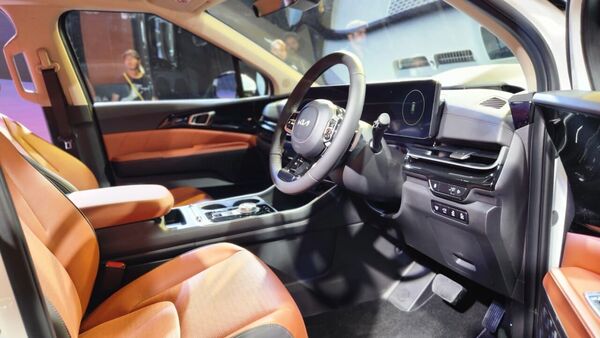
ADAS making increasing penetration in modern cars: Different levels & functions
5 months ago | 5 Views
One of the keywords that have been major headlines in the automobile industry in recent times is the ADAS, which stands for Advanced Driver Assistance System. A major breakthrough in terms of technological advancements reshaping the driving experience in modern cars is ADAS, which leverages cutting-edge technologies to enhance driving safety and improve driver convenience.
Despite increasing penetration of different levels of ADAS in modern cars, there is still confusion about this technology among consumers. Here is a quick and comprehensive look at all the facts about ADAS.
What is ADAS?
ADAS is a collection of safety features and advanced technologies integrated into modern cars in order to enhance driver safety and minimise the risk of road accidents. These advanced technology-aided technologies use sensors, cameras, radars and advanced algorithms to assist drivers in various aspects of driving. ADAS encompasses a wide range of technologies that function in tandem to gather real-time data about the car's surroundings and make informed decisions.
Different levels of ADAS
ADAS consists of multiple levels, each of them representing different degrees of automation and functionality. There are five different levels of ADAS, which offer different levels of automated driving experience.
Here is a quick look at the different levels of ADAS and what they represent.
Level 1 ADAS: Driver assistance
Level 1 ADAS provides basic assistance to the driver. It is usually focused on specific functions like adaptive cruise control, and lane-keeping assistance. In cars equipped with Level 1 ADAS, the driver is fully responsible for vehicle control and must be actively engaged at all times during driving.
Level 2 ADAS: Partial automation
Level 2 ADAS offers partial automation, where the car can assist the driver with specific tasks. Technology-aided safety features like lane centring, automatic braking, and self-parking are included at the Level 2 ADAS. In this level too, the driver must remain attentive and be ready to take control whenever required.
Level 3 ADAS: Conditional automation
Level 3 ADAS offers conditional automation, allowing the car to take control under specific conditions or situations. In Level 3 ADAS, the driver can temporarily disengage from actively monitoring the road, but they need to be ready to intervene as and when required.
Level 4 ADAS: High automation
Level 4 ADAS enables the car to perform most driving tasks without the driver's intervention within certain operational domains or specific environments. However, the functionality of Level 4 ADAS is limited to some pre-defined conditions. These include specific geographic areas or favourable weather conditions. In case the system encounters a challenging situation that it cannot handle, it prompts the driver to take over control of the car.
Level 5 ADAS: Full automation
Level 5 ADAS represents full automation, where the car's onboard computer can perform all the driving tasks without any human intervention, regardless of the driving conditions or environment. This is the most intelligent autonomous driving technology. The Level 5 ADAS-equipped cars are fully self-driving and do not require a human driver.
Key ADAS features
ADAS suite comprises a wide range of advanced technology-aided features. Here is a quick look at those and how they work to make the driving experience better.
Adaptive Cruise Control (ACC)
Adaptive cruise control uses radar or sensors onboard the vehicle to maintain a safe distance between the car and the one running ahead. This technology automatically adjusts the speed to match the traffic conditions, ensuring a more relaxed and convenient driving experience. However, using this feature on highly congested road conditions, especially in bumper-to-bumper traffic situations, could actually make the driving experience more troublesome than relaxing.
Lane Departure Warning (LDW)
Lane departure warning works based on the live feed captured by the car's onboard cameras to monitor lane markings on the road and alert the driver if the vehicle deviates from its designated lane without signalling. This feature acts as a helpful reminder, preventing unintentional lane departures that could lead to potential accidents.
Forward Collision Warning (FCW)
The forward collision warning feature works based on the data gathered by the sensors to detect the distance between the vehicle and objects in its path. If the system detects a potential collision, it alerts the driver, allowing them to take necessary action to avoid or mitigate the impact of the collision.
Blind Spot Detection (BSD)
The blind spot detection feature uses sensors to identify blind spots, typically located on the sides and rear of the vehicle. This feature warns the driver if there is a vehicle, person or obstructing object in the blind spot. This ensures the driver can manoeuvre the vehicle more efficiently and avoid mishaps.
Automatic Emergency Braking (AEB)
Autonomous emergency braking is another key feature, part of the ADAS suite, finding increasing penetration in modern cars. This feature uses sensors to detect imminent collisions and automatically apply the brakes in case the driver fails to respond in time. This feature significantly reduces the intensity of accidents or even prevents them altogether.
Other features
Besides these, there are several other technology-aided features as well, which include parking assistance systems, traffic sign recognition, driver monitoring systems, adaptive headlights, rear cross-traffic alert etc. These features are not necessarily available in all cars and at all levels of ADAS. However, the higher the level of ADAS, the more features it has.
Read Also: Mercedes C 63 AMG S E-Performance: Drifting to India on Nov 12. Take a sneak peek
HOW DID YOU LIKE THIS ARTICLE? CHOOSE YOUR EMOTICON !
#




















